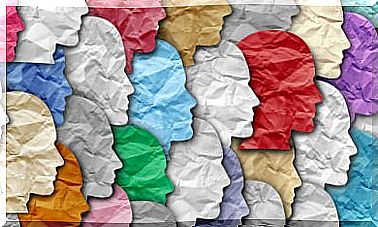Theory Of Self-discrepancy: The Ideal Self, The Real Self And The Responsible Self

Why do people react differently to the same setbacks? Faced with events, such as the breakdown of a marriage or the loss of a job, some people suffer depression while others develop anxiety. This is the event that attempts to explain the theory of self-discrepancy formulated by E. Tory Higgins.
The theory provides a platform for understanding how different types of discrepancies between representations of the self are related to different types of emotional vulnerabilities.
Some people conceive of their goals or standards as hopes or aspirations (ideal guides). Other individuals view their goals as duties or obligations (self-demands). According to the theory of self- discrepancy, this difference between ideals and duties holds the answer to the mystery of why people have different emotional reactions to the same negative events.
This theory proposes that people’s emotional vulnerabilities depend on the type of self-guidance that motivates their lives : discouragement and depression when ideals dominate. Agitation and anxiety, when demands dominate.
The self-discrepancy theory holds that there are other probable selves (how we can become), which are inevitably compared to the current self. Thus, a comparison can be produced between the real and current I with the future I’s.
Higgins distinguishes three types of I: the ideal I, the ideal I and the responsible I. When there are discrepancies, people suffer emotionally. If the real self is at variance with an ideal, people feel sad, disappointed, discouraged, and depressed. Whereas if it is the real self it disagrees with a duty, people feel worried, nervous and tense; in short, anxious.

Self-concept and self-esteem
The knowledge that individuals have about themselves develops throughout life. The self-concept is elaborated from schemes of personal interests, tastes, feelings, values, roles, belonging to classes or groups or classes, decisions and beliefs.
The knowledge of ourselves, our identity, is fundamental for our social well-being. The construction of a positive or negative self-concept will influence the development of self-esteem. We reflect our level of self-esteem in many expressions, including those we address to others.
On the other hand, in addition to the knowledge we have of ourselves, we also imagine how we would like to be. How we would like to be in the future. And that is where the three types of I come into play.
The different me
The theory suggests that individuals are motivated to achieve a goal in which self-concept matches self-guidance. To do this, E. Tory Higgins differentiates three types of the Self.
- The real me. How we really think we are. It is a personal perception, a self-perception and not what we really are. A representation of characteristics that we think we have, a vision of reality that may or may not be true.
- The ideal self. This is the I that we would like to be. In this I, the I that we want to be for ourselves, but also the I that we want to be for others, sneaks into it. Thus, it compiles the set of aspirations and expectations that we have about ourselves.
- The responsible self. This dimension responds to the Self that it should be. The attributes that someone (oneself or others) believe they should possess. That is, a representation of the sense that someone has of their duty, obligations or responsibilities.
The ideal I and the responsible I set objectives and goals for us. The first of them refers to desires and the second responds more to a moral or ethical plane.
Higgins Self-Discrepancy Theory
The discrepancies between the different I’s are, in reality, identity crises. Two types of negative situations are created: the absence of positive results, which are associated with emotions related to dejection, and the presence of negative results, which are associated with emotions related to agitation.
The discrepancy between the real self and the ideal self is characterized by emotions related to despair, such as disappointment and dissatisfaction, and is associated with depression and low self-esteem. They are characterized by the anticipation of little positive results. It can also occur about that part of the ideal self in which the expectations that others have about us and that we make our own are collected. In this case, the emotion of shame and loss of face is added.
When the discrepancy occurs between the real I and the responsible I, that is, with what we consider our duty and our obligations, the emotions that are produced are associated with agitation. Expectations of punishment are generated, the person becomes vulnerable to fear, they will feel threatened and self-criticism will occur.

Applications in psychology
The theory of self-discrepancy has several applications in the approach to psychological problems and other fields. Understanding what emotions are being aroused and identifying their source or the factors that sustain them is important in restoring psychological health, confidence, and future orientation.
Thus, this theory is widely used in the intervention on problems such as anxiety, depression or eating disorders. Also in areas of education, where it is applied in the face of procrastination, in helping students to choose their professional careers or the development of confidence in athletes.









